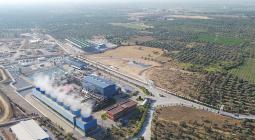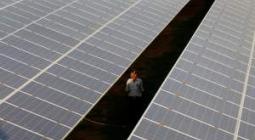How geothermal energy balances the renewable portfolio in California.

With a focus on minimizing the cost of electricity, California's renewable portfolio (standard) is largely unbalanced. This is why geothermal energy is an important element for the State as it provides valuable grid reliability benefits, so an article by industry representatives.
In an article written by V. John White, Executive director of the Center for Energy Efficiency & Renewable Technologies (ceert.org), and Nick Goodman, Chairman and CEO of Cyrq Energy, Inc. they describe the important role geothermal energy plays in balancing the renewable (energy) portfolio in the State of California.
California’s rapid renewable energy expansion has led to a boom in large-scale solar and wind projects and a huge expansion of rooftop solar. As costs have fallen, solar energy has become much less expensive, and utility-scale solar and wind are now less expensive than new gas plants, and far less expensive than existing coal.
Geothermal energy has historically been a large part of California’s renewable energy portfolio, but its role in California’s renewable power supply has steadily declined. California utilities have contracted for virtually no new geothermal as part of their push to comply with the California 50 percent renewable portfolio standard.
The reasons most often cited for why geothermal has been left behind are that it costs more than solar or wind and utilities’ principal goal in building their renewable portfolios is to minimize their cost of complying with the state renewable standard.
California’s RPS program has been widely hailed as a success and yet the resulting renewable portfolio is unbalanced. That’s partly because of the program’s focus on minimizing cost. Even though solar has the lowest levelized cost of energy, because of how much solar we already have on the system, with more being added every year, the incremental value of additional solar is less than at lower penetration levels. In addition, in the Spring and other times of year, the abundance of solar leads to negative pricing on the grid, and the curtailment of thousands of megawatts of solar and other renewables, resulting in lost revenue for renewable projects and higher costs for consumers.
In addition to helping provide much needed balance to California’s renewable portfolio, geothermal can provide valuable grid reliability benefits, which mistakenly, are not considered by the Public Utilities Commission when implementing the renewable portfolio standard. Because geothermal plants use traditional spinning generators and produce power around the clock, they can reduce reliance on natural gas for reliability. A vivid example is found in the most recent Transmission Plan adopted by the California Independent System Operator (CAISO), which showed that abundance of solar and lack of geothermal generation (or any type of energy storage) in the Imperial Valley to the East of San Diego results in continued reliance on natural gas plants to provide reliability when the sun goes down, resulting in higher costs and increased emissions.
The continuing failure to value the economic and environmental benefits of geothermal in Imperial County is interfering with efforts to prevent the collapse of the Salton Sea. Geothermal development in Imperial County has been identified as a crucial economic and environmental component of restoring the sea and helping the struggling community. Geothermal provides significant construction and operating jobs, property taxes to the county and lease revenues to Imperial Irrigation District IID. Geothermal development on the Salton Sea’s south shore also will help cover up the exposed playa as the Sea recedes.
In a 2016 study CEERT carried out for the Walton Foundation, we found that by generating 10 terawatt hours of clean energy with geothermal plants instead of large-scale solar, Californians would save nearly $600 million per year by 2030. The savings result from reducing the amount of excess generation by solar in the middle of the day and curbing the need for natural gas plants to provide grid balancing and flexibility. A similar analysis also showed the cost savings and reliability benefits from New Mexico wind.
As California looks toward 60% renewables by 2030 and 100% zero carbon by 2040, it is increasingly important that regulators, utilities and community choice aggregators pay close attention to how green energy resources fit together, and how they can help run the grid without fossil fuels.
California’s efforts to move to a zero-carbon future will also be watched carefully by other western states establishing clean energy goals of their own. Nevada and Washington have both passed legislation targeting 100% carbon-free electricity in the future, becoming the fourth and fifth states to pass such bills. They will join New Mexico and Hawaii in setting 100% clean electricity targets over the next 30 years. Hawaii is still the only state to commit to getting 100% of its future electricity from renewable energy projects, surpassing the lower threshold of just carbon-free. All these states are blessed with geothermal resources that can play a vital role in ensuring grid stability and efficiency.
California’s size and complex utility regulatory environment will undoubtedly present challenges in transitioning to a grid run by renewables, but given the State’s abundant resources, and decades long experience integrating renewable energy, it has the opportunity to lead the way for other states. California will be successful if it embraces a diverse portfolio of renewable sources, including always-available sources such as geothermal.
Geographic and technological diversity matter, and the effect of resource choices on overall costs, including providing flexibility and reliability, must become a central part of our planning and procurement practices.
V. John White is executive director of the Center for Energy Efficiency & Renewable Technologies, ceert.org. Nick Goodman is the Chairman and CEO of Cyrq Energy, Inc.
Source: This article was published in Renewable Energy World in May 2019 and is here republished with permission of the authors. “Geothermal balances California’s renewable portfolio“, an article written by V. JOhn White and Nick Goodman, published in Renewable Energy World in May 2019
14 October 2019
THINKGEOENERGY





